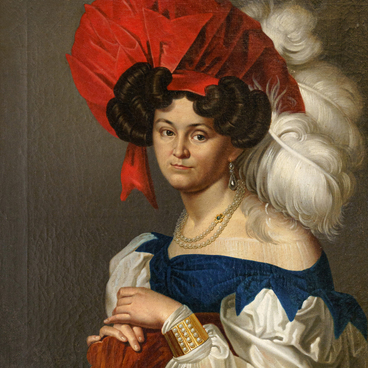Only two works by Ivan Vladimirovich Bazhenov, a graduate of the Imperial Academy of Arts, have survived to this day. One of them depicts Countess Anna Alekseyevna Orlova-Chesmenskaya, the only daughter of Aleksey Grigoryevich Orlov, an associate of Empress Catherine II. She was a prominent socialite and owned land near Rybinsk. In 1833, Anna Orlova-Chesmenskaya became one of the first members of the nobility to allow their serfs to become “free plowmen” (a social category, also known as free farmers or free agriculturalists): in exchange for payment or performance of specific duties, they were granted personal freedom, as well as a plot of land.
Fyodor Fyodorovich Trapeznikov was one of the first serfs of the Yelokhovskaya Volost to take advantage of this opportunity. He became a member of the local community of free farmers and assumed the position of mayor, eventually rising to the merchant class.
It is he who is depicted in the second portrait by
Ivan Bazhenov that has survived to the present day. In the picture, a
middle-aged man is seated at a desk. He is wearing a blue caftan, a white shirt
with yellow trimming, and a wedding ring on his right hand. As is often the
case with merchant portraits, details carry important symbolic significance.
With his left hand, the man holds documents relating to the registration of his
freedom from serfdom. Another document features a solemn poem praising the
countess as a benefactor. It concludes with the words,


